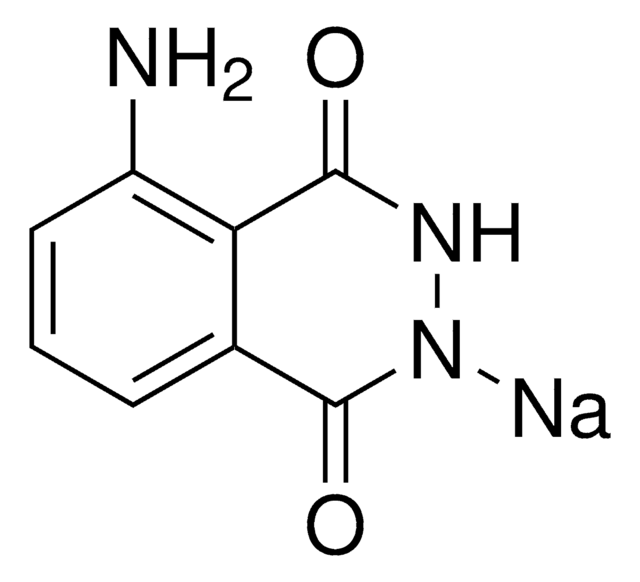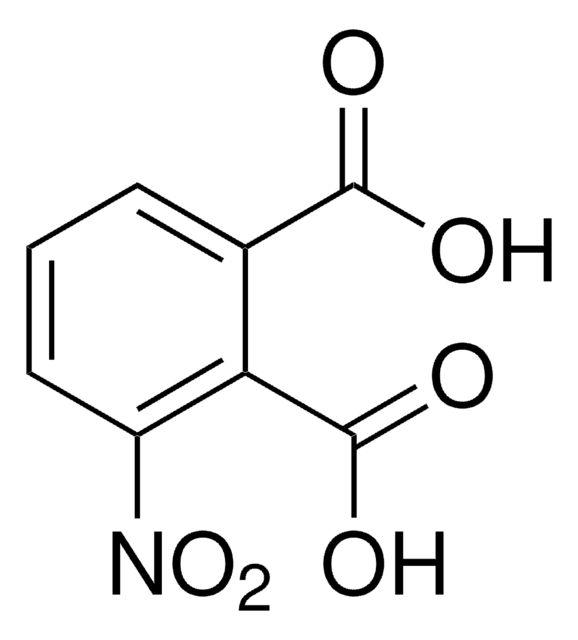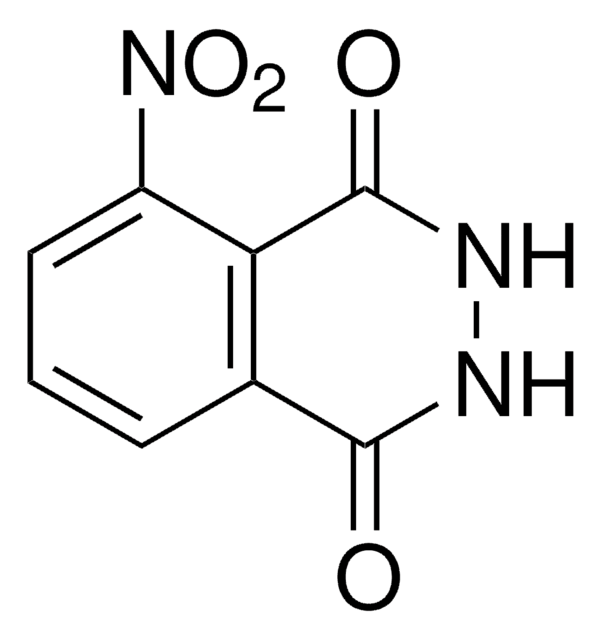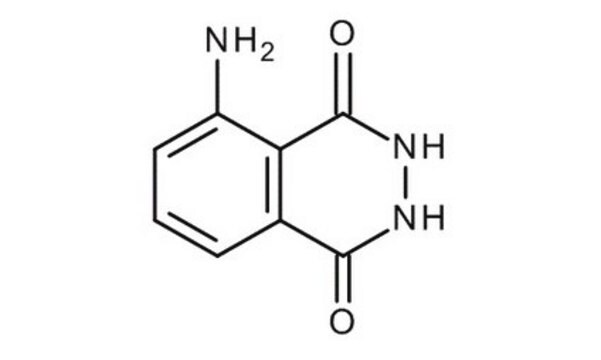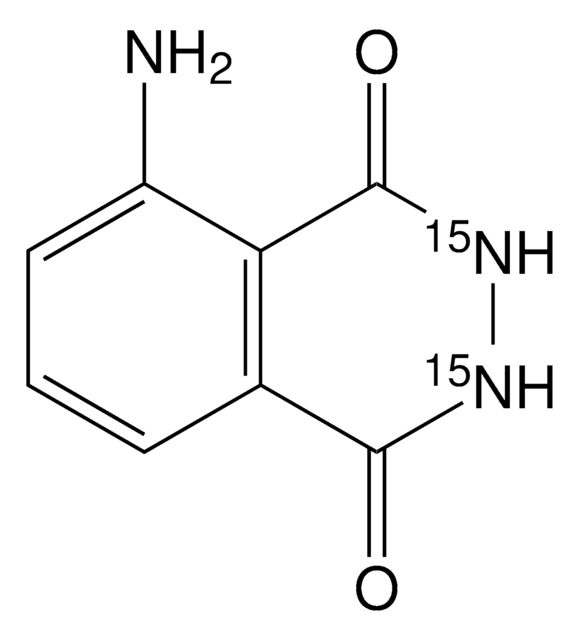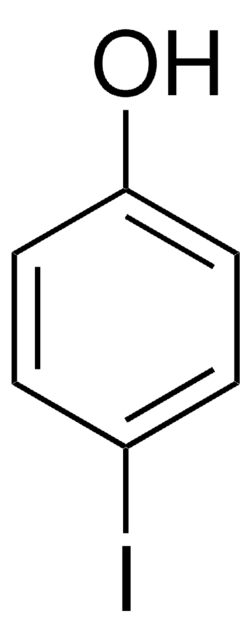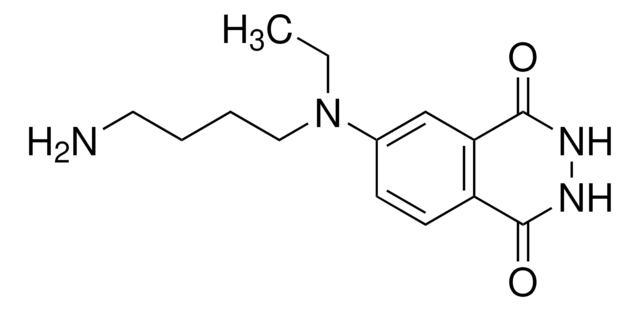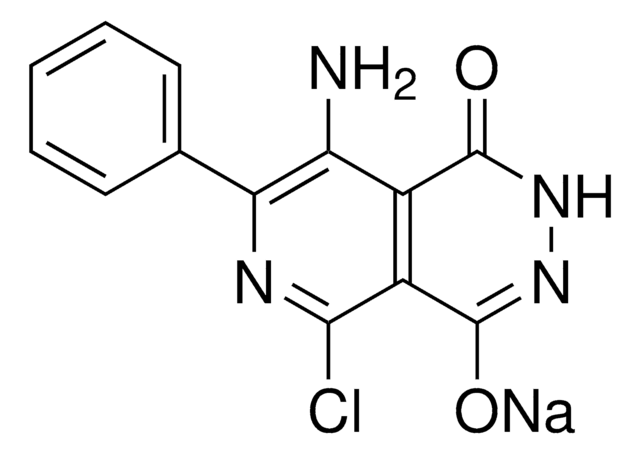123072
Luminol
97%
Synonyme(s) :
3-Aminophthalhydrazide, 5-Amino-2,3-dihydro-1,4-phthalazinedione
About This Item
Produits recommandés
Pureté
97%
Pf
>300 °C (lit.)
Chaîne SMILES
Nc1cccc2C(=O)NNC(=O)c12
InChI
1S/C8H7N3O2/c9-5-3-1-2-4-6(5)8(13)11-10-7(4)12/h1-3H,9H2,(H,10,12)(H,11,13)
Clé InChI
HWYHZTIRURJOHG-UHFFFAOYSA-N
Vous recherchez des produits similaires ? Visite Guide de comparaison des produits
Description générale
Application
- As a chemiluminiscent substance. Used to measure opsonic and phagocytic function.
- As a biological sensor. Used to detect the polymorphonuclear leukocytes (PMNL) response in a patient with a myeloperoxidase (MPO) deficiency.
- Used as a forensic test for blood.
Caractéristiques et avantages
- Very effective chemiluminiscent compound.
- Can detect sub-part per billion levels of metal ions with simple and inexpensive instrumentation.
Code de la classe de stockage
11 - Combustible Solids
Classe de danger pour l'eau (WGK)
WGK 3
Point d'éclair (°F)
Not applicable
Point d'éclair (°C)
Not applicable
Équipement de protection individuelle
dust mask type N95 (US), Eyeshields, Gloves
Certificats d'analyse (COA)
Recherchez un Certificats d'analyse (COA) en saisissant le numéro de lot du produit. Les numéros de lot figurent sur l'étiquette du produit après les mots "Lot" ou "Batch".
Déjà en possession de ce produit ?
Retrouvez la documentation relative aux produits que vous avez récemment achetés dans la Bibliothèque de documents.
Les clients ont également consulté
Articles
Graphene has emerged as the new wonder material. Being only one atom thick and composed of carbon atoms arranged in a hexagonal honeycomb lattice structure, the interest in this material has exploded exponentially since 2004 when it was first isolated and identified using a very simple method.
Notre équipe de scientifiques dispose d'une expérience dans tous les secteurs de la recherche, notamment en sciences de la vie, science des matériaux, synthèse chimique, chromatographie, analyse et dans de nombreux autres domaines..
Contacter notre Service technique

